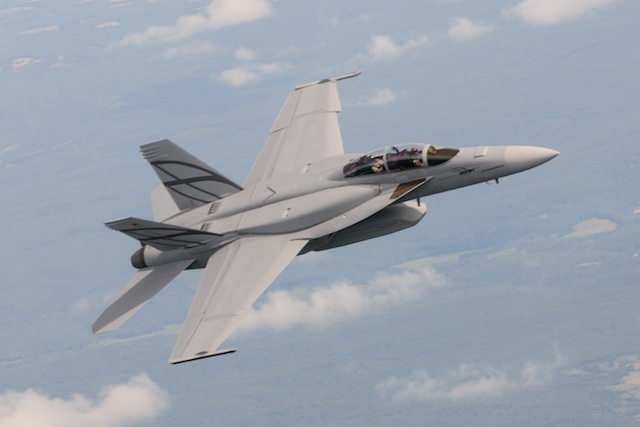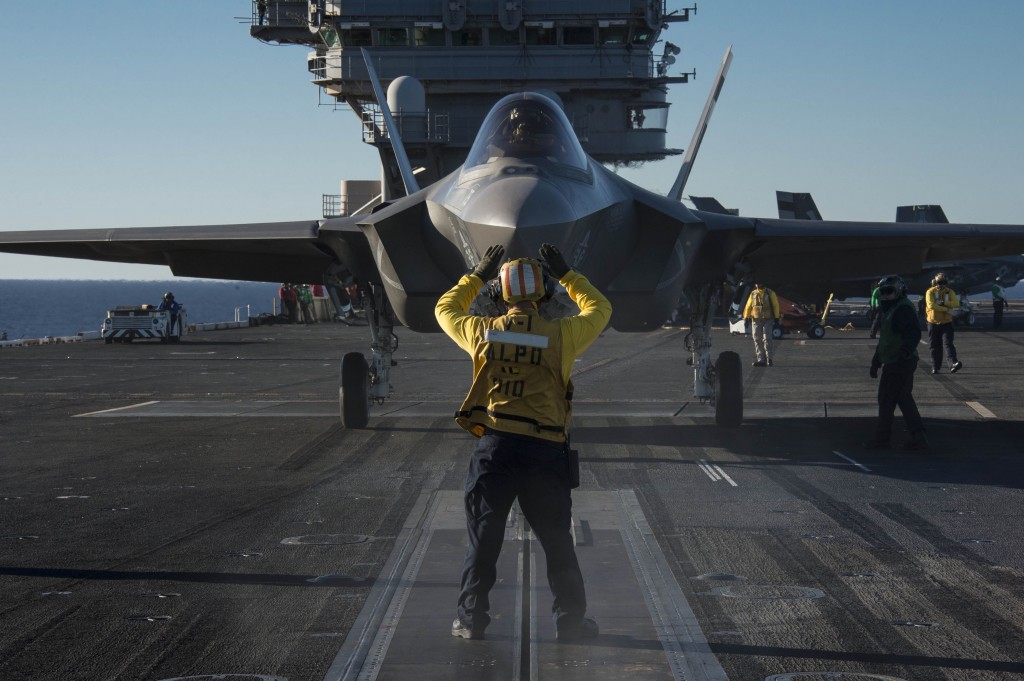Inside Boeing’s F-18 Pitch To White House; Fewer F-35Cs Means Shorter Fight
Posted on

Advanced Super Hornet
WASHINGTON: If the Navy would buy one squadron of new F-18s (known as the XT, Block 3 or Advanced Super Hornet) instead of the carrier version of the F-35 it “actually improves overall mission capability, while substantially reducing cost.”
But the Navy could go even one better and buy two squadrons of the new F-18, which would give the Navy “the best capability affordably.” Buying 120 Super Hornets and 200 of the Advanced Super Hornets (which is what their plan would work out to) would save $8 billion in procurement costs each year plus $1.4 billion in operations and maintenance costs each year, the report claims.
That’s the essence of the story that Boeing is telling the Pentagon and the White House, according to a Boeing document I obtained that was presented to White House officials. The document marks a shift in Boeing’s efforts. In years past the pitch was, essentially, buy more Super Hornets. Now the company wants to convince the Pentagon to shift the balance between the F-18 and the F-35 in favor of their plane. That push has gained much momentum since President Trump’s famous tweets about the F-35’s high costs, Defense Secretary Jim Mattis ordering a review of the costs and capabilities of the F-35C and F-18 and the news that the Navy fighter fleet is in what analysts are calling a death spiral.
As the headline for Sydney’s story about Navy Department readiness notes, 62 percent of F-18 Hornets are unfit to fly and the number for the Marines is up to 74 percent.

F-35C
Boeing has been offering some version of the argument that the F-18 is cheaper, ready to fly and almost as good as the F-35C for years. They’ve been eager to keep their production line open and saw the chance to cut into Lockheed Martin’s fighter business. For its part, Lockheed Martin has known for years its F-35C sales were the most in peril because of Navy concerns about the F-35’s ever-rising costs and its uncertain life cycle costs.
This new document goes much further. It includes a chart — “Analysis of Future A2/AD PACOM Scenario” (can you say China?) — claiming that shifting the balance of F-18s and F-35Cs would “reduce campaign duration” substantially. Keeping the planned Navy buy of three F/A-18 Super Hornet squadrons and two F-35C squadrons would result in a longer fight, it says.
Another chart at the bottom ticks off the characteristics of the two planes. It grants they both have “advanced radar” and “survivability.” But it claims the advanced F-18 would outpace the F-35C in maneuverability, acceleration, combat radius and weapons load.
On costs, the paper says the advanced Hornet would cost $79 million all up — including government gear — while Boeing pegs the F-35C’s total weapon cost at $120 million.
A source familiar with the F-35 program says F-35C costs should be around $100 million by 2021. The source concedes that cost per flying hour is a bit higher for the C but it is, of course, a truly stealthy aircraft while the F-18 is not.
Boeing also argues that the Advanced Super Hornet would be “complementary” to the F-35C. “Both platforms are survivable in the future because of stealth, Growler and self-protect EW,” one Boeing source says. This would give the military “flexibility in deciding how much of each platform they need, keeping in mind they need both.”
A key issue in terms of the Mattis-ordered review is whether the Advanced Super Hornet is being factored into the cost and capabilities comparison of the F-18 and the F-35C that the Deputy Defense Secretary will receive. It’s not clear, at this point.
Subscribe to our newsletter
Promotions, new products and sales. Directly to your inbox.
